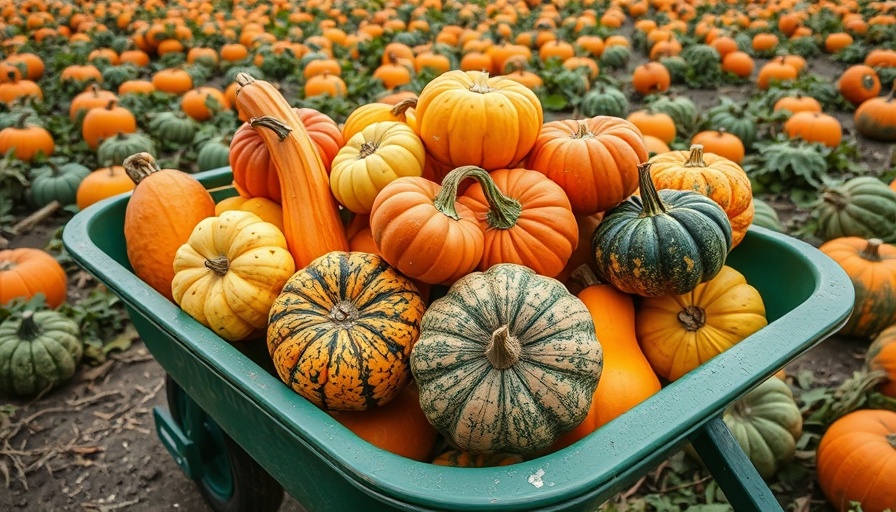
Understanding Winter Squash: A Gardener's Delight
Winter squashes, with their rich flavors and nutritional profiles, have graced our tables for over 10,000 years. These hardy fruits develop all summer long, only to reward gardeners with their earthy sweetness as the fall approaches. Varieties such as butternut, acorn, and spaghetti squash are not only delicious but also rich in vitamins A, B6, C, fiber, and essential minerals like potassium and magnesium. With proper harvesting techniques, you can ensure a bountiful supply well into winter.
When to Harvest: Key Indicators
The timing for harvesting winter squash is crucial. According to gardening experts, the best practice is to monitor several signs of maturity. Wait until the skin is hard, the color is dull, and the stem has turned brown and woody — an essential indicator that the squash is ready for harvest. Counting the days from sowing to maturity is another tactic. Typically, winter squash varieties take approximately 80 to 120 days to reach full maturity. Patience is key, as each squash will vary slightly based on environmental conditions.
Signs of Ripe Winter Squash
Several methods can aid in determining when your squash is ripe. The 'tough skin test,' involves pressing a fingernail into the squash. A mature squash will resist puncture, indicating it’s time to harvest. Similarly, the stem condition offers vital clues; a dry, thick stem suggests readiness. Check for color changes—most varieties transition from green to their mature hues, signaling they're ready to be picked. Finally, consider the "hollow sound test"—a tap on the squash should produce a hollow thud, confirming that the fruit is mature.
Beating the Frost: Timing Your Harvest
One of the greatest threats to winter squash is frost. A hard freeze can drastically shorten the storage life of harvested squash. To ensure they have fully matured, harvest winter squash before the first frost, usually from late September to early October in temperate climates. If an early frost threatens your plants, it is essential to act quickly while carefully handling the fruits to avoid damage to their skins. If you must harvest early, curing them in a warm, sunny spot for a few days can help them mature off the vine.
Curing and Storing for Maximum Flavor
After harvesting, curing your squash is vital for enhancing flavor and extending shelf life. To cure, place your squash in a bright, warm area (ideally 80-85°F) for 1-2 weeks, allowing the skin to toughen and for healing of any small wounds. This process not only improves flavor but also helps convert starches into sugars, making for a sweeter taste experience later.
Practical Tips for Backyard Gardeners
For DIY gardeners in Muskegon looking to maximize their winter squash yield, consider starting a backyard planting box or building elevated planter boxes to save on space and enhance soil quality. Proper planning, such as implementing automated watering hacks or laying out planting rows methodically, will further enhance your gardening experience. Remember, investing in homemade watering devices or even a simple composting barrel can significantly boost your gardening success.
Conclusion: Your Guide to Delicious Winter Squash
Winter squash offers a delectable addition to your kitchen and is a testament to the artistry and patience of home gardening. By recognizing the signs of maturity, adhering to proper harvesting techniques, and ensuring correct curing and storage methods, you can ensure a fruitful and flavorful harvest this season. For fellow gardeners in Muskegon, starting your winter squash journey with structured planting can lead to rich rewards. Happy gardening!
 Add Row
Add Row 
 Add
Add 


Write A Comment